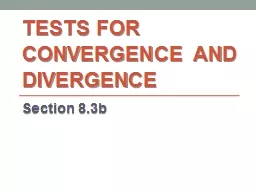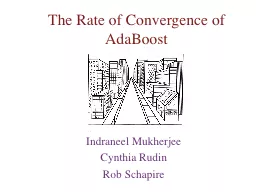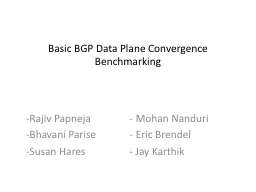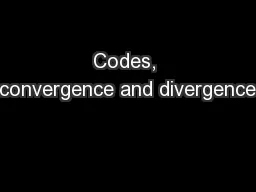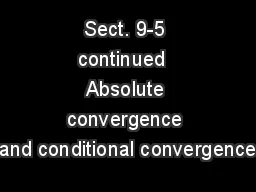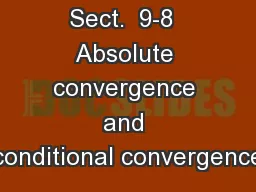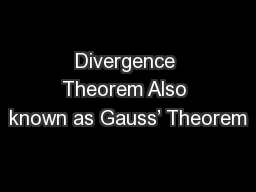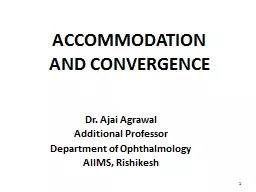PPT-Tests for Convergence and Divergence
Author : min-jolicoeur | Published Date : 2016-03-09
Section 83b Sometimes we cannot evaluate an improper i ntegral directly In these cases we first try to d etermine whether it converges or diverges Diverges End
Presentation Embed Code
Download Presentation
Download Presentation The PPT/PDF document "Tests for Convergence and Divergence" is the property of its rightful owner. Permission is granted to download and print the materials on this website for personal, non-commercial use only, and to display it on your personal computer provided you do not modify the materials and that you retain all copyright notices contained in the materials. By downloading content from our website, you accept the terms of this agreement.
Tests for Convergence and Divergence: Transcript
Download Rules Of Document
"Tests for Convergence and Divergence"The content belongs to its owner. You may download and print it for personal use, without modification, and keep all copyright notices. By downloading, you agree to these terms.
Related Documents

